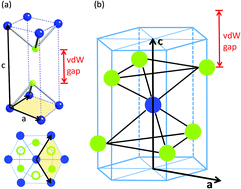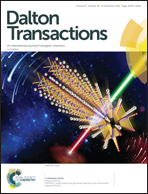The dp type π-bond and chiral charge density waves in 1T-TiSe2
Abstract
Based on the atomic electronic configuration and Ti–Se coordination, a valence bond model for the layered transition metal dichalcogenide (TMDC) 1T-TiSe2 is proposed. 1T-TiSe2 is viewed as being composed of edge-sharing TiSe4-plaquettes as TiSe2-ribbon chains in each layer via a directional valence shell electron distribution as chemical bonds, in contrast to the conventional layer view of face-sharing TiSe6-octahedra. The four valence electrons per Ti in the hybridized dsp2-orbitals of square coordination form σ-bonds with the four nearest neighbor Se atoms in the chain. The electrons in the lone pair of the Se-4pz orbital are proposed to form a dp type π-bond via side-to-side orbital overlap with the empty Ti-3dxz/3dyz orbitals within each chain, which is positively supported by quantum chemistry calculations. A study of electron energy loss spectroscopy (EELS) with transmission electron microscopy (TEM) for 1T-TiSe2 is presented to show an energy loss near ∼7 and ∼20 eV, which confirms the existence of collective plasmon oscillations with the predicted effective electron numbers for the π- and (π + σ)-bond electrons, respectively.



 Please wait while we load your content...
Please wait while we load your content...